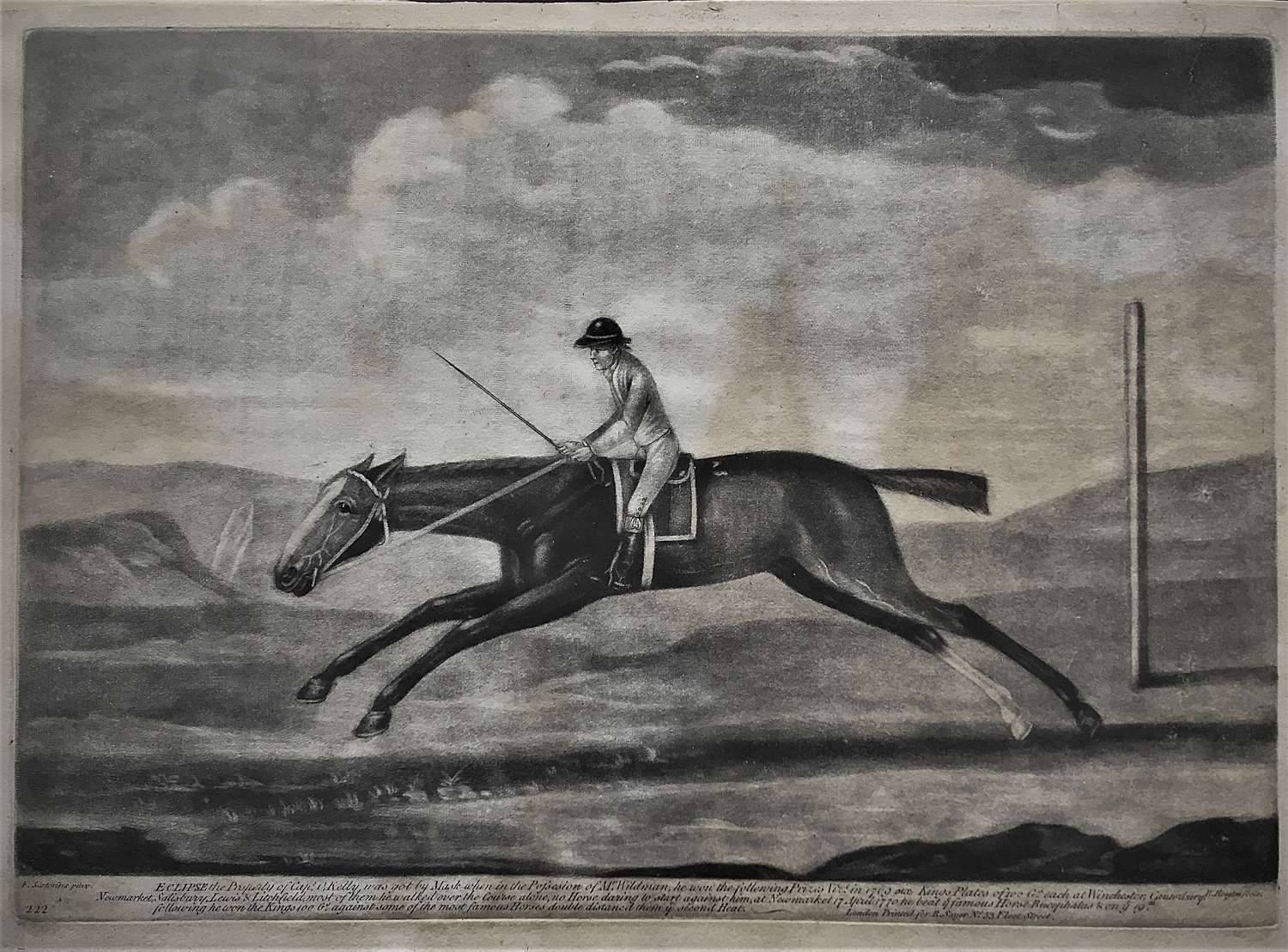
Tregeagle Fine Art |
Tel: 01865 882 854 Email: sandyrich71@gmail.com Web site: https://www.tregeaglefineart.com/ |
|
Code: 10248
Dimensions:
Richard Houston (c. 1721-1775), after Francis Sartorius the Elder(1734-1804)
"Eclipse"
Mezzotint
Published by Robert Sayer (1725-1794), Circa 1770
Unframed
27.3 cm x 37.4 cm
Lettered below the image with the title, "F. Sartorius pinx. / R. Houston fecit. / London Printed for R. Sayer No. 53 Fleet Street / 222", and "ECLIPSE the Property of Capt. O'Kelly, was got by Mask when in the Possession of Mr. Wilman, he won the following Prizes Vizt. in 1769 six Kings Plates of 100 Gs. each at Winchester, Canterbury, Newmarket, Salisbury, Lewis & Litchfield, most of them he walked over the Course alone, no Horse daring to start against him, at Newmarket 17 April 1770 he beat ye famous Horse Bucephalus & on ye 19th. follwing he won the Kings 100 Gs. against some of the most famous Horses double distanc'd them ye second Heat".
A fine impression of a rare contemporay mezzotint portrait of the legendary Eclipse (1764–1789), the most celebrated racehorse of the 18th Century and one of the most influential Thoroughbred racehorses of all time. Eclipse was so named because he was foaled during the Annular Solar Eclipse of 1 April 1764. He remained undefeated and untouchable over all 18 of his starts. The horse had a distinctive white muzzle and a single white 'sock' on his right hind leg. Eclipse's bloodline appears in the pedigree of almost all modern racehorses. The famous quote "Eclipse first, the rest nowhere" was made on 3rd May 1769 by the horse's colourful owner, Capt. Dennis O'Kelly (1725–1787), when he predicted just how decisively his horse would beat the opposition in a race on Newmarket Heath.
The plate was made by the Dublin born, Irish printmaker Richard Houston (c. 1721-1775) after an equestrian portrait by Francis Sartorius the Elder (1734-1804). Eclipse is shown running out on his own - no other horses in sight, possibly with "Well Gap" in the Devil's Dyke, Newmarket Heath in the background. The jockey depicted is almost certainly John Oakley (1736-1793), who rode Eclipse in his most celebrated victories.
See British Museum 1949,0930.2 and 1983,U.864 for similar impressions
